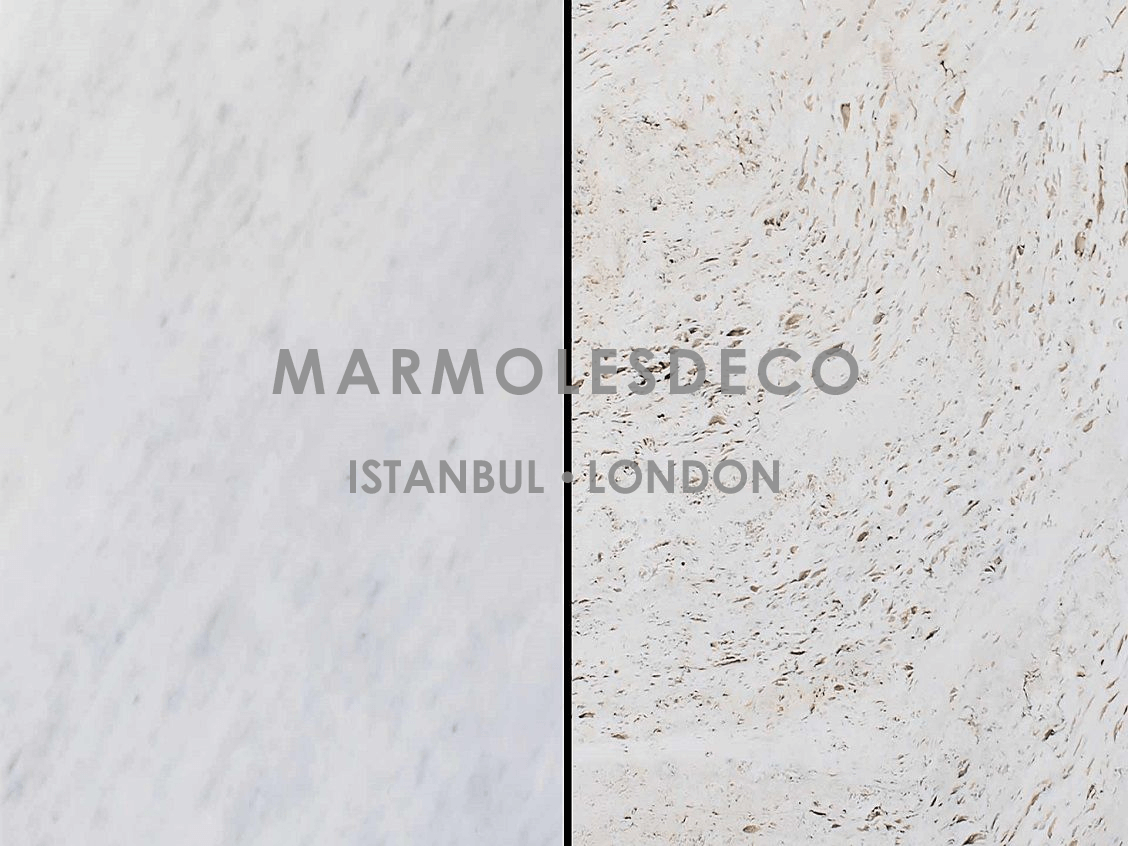When deciding between marble and travertine, consider factors such as the desired aesthetic, intended use, maintenance preferences, and budget constraints. Both stones offer unique characteristics and can contribute to a distinctive look in various architectural and design applications. Let's compare marble and travertine across various aspects
Marble and travertine are both natural stones that are commonly used in construction and decorative applications, but they have distinct differences in terms of composition, appearance, and characteristics. Let's delve into the key variations between marble and travertine:
Formation:
Marble: Marble is a metamorphic rock that forms from the recrystallization of limestone or dolomite. The process involves high pressure and temperature, causing the original minerals to reorganize into a new crystalline structure.
Travertine: Travertine is a sedimentary rock that originates from the precipitation of calcium carbonate from groundwater. It often forms in caves or near hot springs, resulting in distinctive patterns and voids.
Composition:
Marble: Mainly composed of calcite or dolomite, marble is relatively dense and has a smooth, homogeneous appearance. It may contain various minerals that contribute to its color and veining.
Travertine: Primarily composed of calcite, travertine has a porous structure with visible holes or pits caused by the escaping gases during formation. These voids can be left unfilled or filled with resin or cement during processing.
Color and Veining:
Marble: Marble comes in a wide range of colors, including white, beige, gray, green, and more. It often exhibits prominent veining patterns, which can be fine or bold, depending on the type of marble.
Travertine: Travertine is commonly found in earthy tones such as beige, brown, and tan. Its veining is usually more subtle compared to marble, and it may have a mottled appearance.
Surface Finish:
Marble: Marble can be polished to achieve a high-gloss finish, honed for a matte appearance, or tumbled to create a weathered and textured surface.
Travertine: Travertine is often honed or tumbled, showcasing a more natural and rustic appearance. Polished travertine is less common due to its porous nature.
Durability:
Marble: While marble is durable, it is susceptible to etching and staining, particularly when exposed to acidic substances. Regular sealing is recommended to protect the surface.
Travertine: Travertine is softer and more porous than marble, making it more prone to scratching, staining, and etching. Proper sealing is crucial to enhance its durability.
Common Applications:
Marble: Widely used in countertops, flooring, wall cladding, and sculptures, marble is valued for its elegance and timeless beauty.
Travertine: Commonly used for flooring, wall tiles, and outdoor paving, travertine's rustic appearance lends itself well to certain design styles.
Understanding these differences can help you make informed decisions when choosing between marble and travertine for your specific application. Consider factors such as aesthetics, maintenance requirements, and the intended use of the stone to determine which material is best suited for your needs.





 Online Catalog
Online Catalog